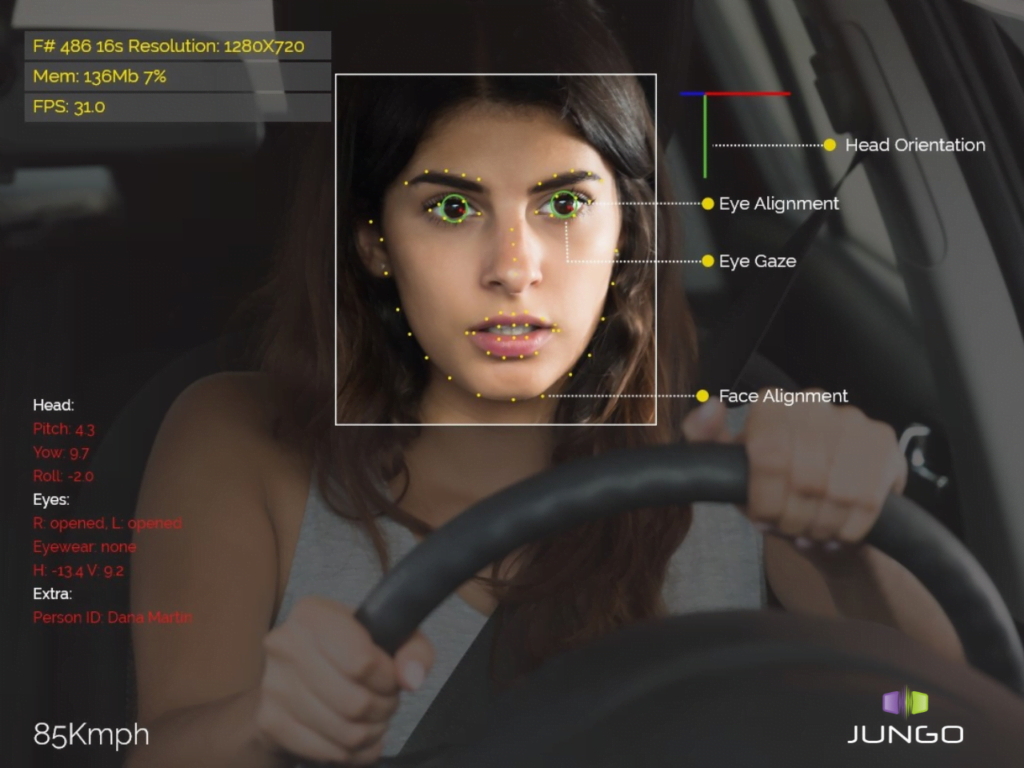Driving Safety in the Age of GSR 2024: How Driver Monitoring Systems Can Help
The General Safety Regulation (GSR) is a regulation that sets mandatory safety requirements for new passenger cars and light commercial vehicles sold in the European Union (EU). The purpose of the regulation is to improve the safety of vehicles and reduce the number of accidents and fatalities on European roads. This includes a requirement for vehicles to be equipped with systems to detect driver distraction and drowsiness and is set to come into effect in 2024.
The implementation of DMS in vehicles is a significant step towards reducing the number of accidents caused by driver distraction or fatigue. The GSR requires all new passenger cars and light commercial vehicles sold in the European Union to have a DMS installed by 2024, with the aim of improving safety on the roads and reducing the number of fatalities and injuries resulting from accidents caused by driver inattention. Meeting the safety requirements outlined in the GSR is critical for ensuring the safety of vehicles and reducing the number of accidents and fatalities on European roads.

Understanding GSR Regulation 2024
GSR 2024 introduces several new safety requirements to improve the safety of vehicles on European roads. Here is an outline of some of the these requirements:
- Advanced Driver Assistance Systems (ADAS): The GSR 2024 mandates the installation of ADAS in all new passenger cars and light commercial vehicles sold in the EU. These systems include technologies such as autonomous emergency braking (AEB), lane departure warning (LDW), and driver monitoring systems (DMS).
- Pedestrian and Cyclist Protection: The GSR 2024 requires new vehicles to be designed with improved safety features to protect pedestrians and cyclists in the event of a collision. These features include the use of advanced sensors and cameras to detect vulnerable road users and automatic emergency braking systems to prevent collisions.
- Improved Crash Test Standards: The GSR 2024 introduces new crash test standards to evaluate the safety performance of vehicles. These include the use of new crash test dummies to assess the impact of collisions on different parts of the body and the use of more comprehensive testing procedures to evaluate the safety features of vehicles.
- Intelligent Speed Assistance (ISA): The GSR 2024 mandates the installation of ISA in all new vehicles. ISA is a technology that uses GPS and mapping data to alert drivers when they are exceeding the speed limit and can even intervene to limit the vehicle’s speed if necessary.
- Data Recording: The GSR 2024 requires new vehicles to be equipped with data recorders to collect information about the vehicle’s performance in the event of an accident. This data can be used to investigate accidents and identify ways to improve vehicle safety.

Driver Monitoring Systems Explained
A Driver Monitoring System (DMS) is an advanced safety technology that is designed to monitor the driver’s behavior and alert them if they are showing signs of drowsiness, distraction, or impairment. DMS technology uses cameras and sensors to monitor the driver’s facial features, eye movements, and head position to determine whether they are alert and focused on the road.
A DMS system works by combining a number of factors including cameras and sensors, facial recognition, eye tracking, head position and most importantly alerting the driver. DMS is a critical safety technology that can help to prevent accidents and save lives. By continuously monitoring the driver’s behavior, DMS technology can provide an extra layer of safety on the road and help to reduce the number of accidents caused by driver error.
There are many benefits of using a Driver Monitoring System, here are a few:
- Improved Safety – DMS can help to prevent accidents caused by driver error and reduce the risk of injury or death.
- Reduced Accidents – By alerting drivers to potential dangers on the road, DMS technology can help to reduce the number of accidents caused by driver error. This can lead to fewer injuries, fatalities, and property damage on the roads.
- Increased Awareness: DMS can teach drivers to become more aware of their own behavior and habits behind the wheel and in turn help them develop safer driving habits.
- Reduce maintenance costs – By encouraging safe driving habits and reducing the risk of accidents, a DMS can help to extend the life of the vehicle. This can help to reduce maintenance costs over time and save money on repairs and replacements.
While DMS has many benefits, there are also several challenges to implementing it, including:
- Cost: One of the main challenges of implementing a DMS is the cost. DMS systems can be expensive to install and maintain, making it difficult for some vehicle manufacturers to adopt the technology.
- Driver Acceptance: Another challenge is getting drivers to accept the technology. Some drivers may feel that DMS technology is invasive or unnecessary, and may be reluctant to use it.
- Privacy Concerns: DMS technology can raise privacy concerns, particularly if the technology is used to collect and store sensitive data on drivers. This can be a particularly sensitive issue in countries with strict data privacy laws or where there is a general distrust of technology.
- False Positives: DMS technology can sometimes generate false positives and can lead to unnecessary alerts and can cause drivers to become frustrated with the technology.
Future of DMS and GSR 2024 Compliance
Advancements in DMS technology can have a significant impact on compliance with GSR 2024. Some of the key advancements so far to date are:
- Artificial intelligence and Machine Learning: Advances in AI and machine learning are helping to make DMS technology more accurate and effective. By analyzing vast amounts of data, these systems can quickly identify risky behavior and alert drivers in real-time/
- Multi-Modal Sensors: Modern DMS systems are equipped with a range of sensors, including cameras, microphones, and pressure sensors. This allows them to capture a wide range of data on the driver’s behavior, including eye movements, head position, and vocal cues.
- Cloud-Based Analytics: Many modern DMS systems are now cloud-based, allowing them to analyze data in real-time and provide instant feedback to drivers.
Advancements in DMS technology are helping to improve compliance with GSR 2024 by providing more accurate, effective, and customizable systems. Manufacturers and vehicle owners who adopt these systems can benefit from improved safety, reduced accidents, and better compliance with regulatory requirements.

Since DMS is becoming increasingly important for vehicle safety, we will likely see greater use of it in commercial vehicles such as trucks and buses, where driver fatigue and distraction can have serious consequences. DMS is also likely to become increasingly integrated with ADAS, which can help improve vehicle safety by providing early warning of potential hazards and assisting drivers in avoiding accidents.
Driver Monitoring Systems can play an important role in ensuring compliance with the General Safety Regulation 2024. In summary, meeting the safety requirements outlined in the GSR is crucial for protecting people’s lives, legal compliance, building consumer trust and confidence, and driving innovation in the automotive industry.
At Jungo, we make it a priority to work closely with regulators and manufacturers in the automotive industry to help develop clear and actionable strategies for achieving vehicle safety standards from start to finish. Thanks to GSR, new vehicle safety technology will continue to be developed and improved in the coming years.
To learn more about how Jungo maintains compliance with these safety regulations, feel free to contact our team.

